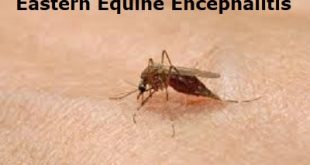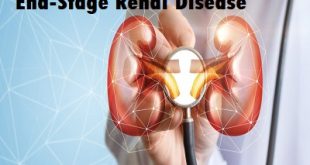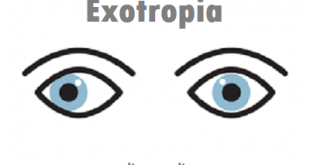Introduction
An ear infection (acute otitis media) is most often a bacterial or viral infection that affects the middle ear, the air-filled space behind the eardrum that contains the tiny vibrating bones of the ear. Children are more likely than adults to get ear infections. Ear infections frequently are painful because of inflammation and buildup of fluids in the middle ear.
There are two different types of otitis media. Either can occur in one or both ears.
- Acute otitis media, which is also called an ear infection, is an infection of the middle ear. Fluid in the middle ear may remain even after an infection is gone.
- Otitis media with effusion, also called middle ear fluid, is fluid that is not infected. When a child has a cold, a small tube between the ear and the throat can become blocked, causing fluid to build up in the middle ear
Epidemiology of ear infection
80% of all children have ear infections before the age of three, which represents 16M annual episodes in the US alone. 20-30% of children have an average of 6 recurrences before the age of seven. Ear infections are the most common cause for a sick child visit to the doctor and accounts for half of all pediatric antibiotics. The World Health Organization attributes 28K annual deaths to complications resulting from ear infections.
What causes an ear infection?
Ear infections are caused by viruses or bacteria that infect the middle ear. In children, the Eustachian tube, which runs from the ear to the back of the throat, is short, and more horizontal than an adults. It becomes blocked more easily, such as during a common cold.
When the tube becomes blocked, fluid does not drain away from the middle ear as it normally does. This may cause an infection which usually arises from germs found in the nose and throat.
Other causes are:
- An upper respiratory tract infection
- Sudden changes in air pressure (i.e. airline travel)
- Using cotton buds to clean the ears (they push ear wax further down the ear canal and may cause a blockage)
- Smaller than average Eustachian tubes
- Swimming in polluted water (called otitis externa, or swimmer’s ear)
What are the symptoms of ear infection?
In child
- The first signs of infection are often similar to those of a cold, with a snuffly, blocked or runny nose and mild fever.
- Your child may not want to eat or sleep, and is generally irritable.
- Sometimes there is a discharge (pus or blood) coming from the ear.
- An older child may complain of an earache, headache or hearing problems. A younger child may simply pull at their ear or be upset. Babies (up to 12 months) can become extremely irritable, shove fingers in their ears and lose their appetite.
- Sometimes the symptoms are very mild and the ear infection is only picked up when a doctor looks at your child’s ears.
- Poor sleep
- Child pulls on ear
In Adults
- Earache
- Feeling of fullness or pressure
- Hearing problems
- Dizziness, loss of balance
- Nausea, vomiting
-
Ear drainage
- Fever
Risk factors
Ear infections occur most commonly in young children because they have short and narrow eustachian tubes. Infants who are bottle-fed also have a higher incidence of ear infections than their breastfed counterparts. Other factors that increase the risk of developing an ear infection are:
- Altitude changes
- Exposure to cigarette smoke
- Pacifier use
- Age
- Recent illness or ear infection
- Infant feeding. Babies who drink from a bottle, especially while lying down, tend to have more ear infections than do babies who are breast-fed.
- Seasonal factors. Ear infections are most common during the fall and winter when colds and flu are prevalent. People with seasonal allergies may have a greater risk of ear infections during seasonal high pollen counts.
- Poor air quality. High levels of air pollution can increase the risk of ear infection.
How can Otitis Media affect hearing?
When a child has fluid in the middle ear, the fluid reduces sound traveling through the middle ear. Sound may be muffled or not heard. Children with middle ear fluid will generally have a mild or moderate temporary hearing loss. (It’s as if you plugged your ears with your fingers.) However, some children have no change in their hearing.
- Mild Hearing Loss—A child may not hear or may hear very faintly the soft sounds at the beginnings and ends of words, such as the “s” in “sun” and the “t” in “cat,” and words spoken quickly such as “and.”
- Moderate Hearing Loss—A child may have trouble hearing most speech sounds, and may have trouble with short, softly spoken words and word endings. It’s important to know that some children with otitis media have no loss of hearing. A hearing loss due to middle ear fluid should go away once the fluid is gone.
- Speech or developmental delays. If hearing is temporarily or permanently impaired in infants and toddlers, they may experience delays in speech, social and developmental skills.
- Spread of infection. Untreated infections or infections that don’t respond well to treatment can spread to nearby tissues. Infection of the mastoid, the bony protrusion behind the ear, is called mastoiditis. This infection can result in damage to the bone and the formation of pus-filled cysts. Rarely, serious middle ear infections spread to other tissues in the skull, including the brain or the membranes surrounding the brain (meningitis).
- Tearing of the eardrum. Most eardrum tears heal within 72 hours. In some cases, surgical repair is needed.
How can I recognize if my child has a hearing loss?
- Having difficulty paying attention
- Showing a delayed response or no response when spoken to
- Saying “huh?” often
- Not following directions well
- Turning up sound on radios, TV, CDs
- Withdrawing from other children
- Being over-active or uncooperative
Diagnosing middle ear infection
A middle ear infection (otitis media) can usually be diagnosed using following instruments:
An otoscope
Otoscope is a small handheld device with a magnifying glass and a light source at the end. Using an otoscope, a doctor can examine the ear to look for signs of fluid in the middle ear, which may indicate an infection.
Otoscope
Tympanometry
Tympanometry is a test that measures how the ear drum reacts to changes in air pressure. During a tympanometry test, a probe is placed into your child’s ear. The probe changes the air pressure at regular intervals while transmitting a sound into the ear. A measuring device is attached to the probe to record how the drum moves and how changes in air pressure affect this movement. A healthy ear drum should move easily if there’s a change in air pressure. If your child’s ear drum moves slowly or not at all, it usually suggests there’s fluid behind it.
Tympanometry and its Parts
Audiometry
Audiometry is a hearing test that uses a machine called an audiometer to produce sounds of different volume and frequency. This can help determine if your child has any hearing loss as a result of their condition. During the test, your child listens through headphones and is asked if they can hear the sounds.
Audiometry
Scans
On the very rare occasions where there’s a possibility the infection has spread out of the middle ear and into the surrounding area, a scan of the ear may be carried out. This may be either a:
- Computerized tomography (CT) scan
- Magnetic resonance imaging (MRI) scan
Treatment and Medications
Most bouts of ear infection will clear on their own without treatment within 2-3 days. The immune system can usually clear germs (bacteria or viruses) that cause ear infections. However, treatments that may be advised include the following:
Painkillers
If the ear infection is causing pain, then give painkillers to children regularly until the pain eases. For example, paracetamol (Calpol®, Disprol®, etc) or ibuprofen. These medicines will also lower a raised temperature which can make a child feel better. If antibiotics are prescribed (see below), you should still give the painkiller as well until the pain eases.
Antibiotics
Antibiotics are not advised in most cases. This is because the infection usually clears within 2-3 days on its own. Also, it is best not to take antibiotics unless needed, as side-effects such as diarrhea or rash can sometimes be a problem. Antibiotics are more likely to be prescribed if:
- The child is under 2 years old (as the risk of complications is greater in babies).
- The infection is severe.
- The infection is not settling within 2-3 days.
- Complications develop.
Neck exercises
Some earaches are caused by pressure in the ear canal. Certain neck exercises can be used to relieve this pressure. Neck rotation exercises are particularly beneficial.
Follow these steps to perform neck rotations exercises:
- Sit straight up with both feet flat on the ground.
- Slowly rotate your neck and head to the right until your head is parallel with your shoulder.
- Rotate your head the other way, until your head is parallel with your left shoulder.
- Raise your shoulders high as if you’re trying to cover your ears with your shoulders.
- Make the movements slowly, hold them gently stretching more for a count of five, then relax.
- Repeat these often throughout waking hours.
Natural remedies
Naturopathic drops
Naturopathic ear drops are made from herbal extracts. They can be found online and in some drug stores. One study found that drops containing herbal extracts in a base of olive oil could be just as, or even more, effective as traditional over-the-counter ear drops.
Tea tree oil
Tea tree oil has powerful antifungal, antiseptic, anti-inflammatory, and antibacterial properties. These can be applied as ear drops to reduce pain and discomfort. If you’re worried about sensitivity, you can mix a few drops of tea tree oil with a small amount of olive oil.
Ginger
Ginger has natural anti-inflammatory properties that can help soothe pain from earaches. Apply ginger juice, or strained oil that was warmed with ginger in it, around the outer ear canal. Do not put it directly into the ear.
Garlic
Garlic has both antibiotic and pain-relieving properties. One study found that eardrops containing garlic, among other ingredients, were just as effective as over-the-counter eardrops. Soak crushed garlic for several minutes in warm olive or sesame oil. Strain the garlic out and apply the oil into the ear canal.
Home care
You can help your child in several ways.
- Offer fluids (water), frequently and in small amounts (‘sips’), especially if they have a fever.
- Give pain relief medication if your child is in pain, for example paracetamol (such as Panadol or Dymadon), Ibuprofen or a paracetamol-codeine mix (such as Painstop). Carefully check the label for the correct dose and make sure you are not giving your child any other products containing paracetamol (such as some cough medicines and cold and flu preparations).
- Raise the head of the bed or cot to help drain fluid in the Eustachian tube (make sure your baby cannot slip under the covers).
- Give your child plenty of rest, with quiet activities at home.
- Keep children away from childcare or school until they are better.
- Do not put cotton buds in the ear even if there is pus or blood. This may damage the eardrum.
- Do not fly with your child until your doctor tells you it is all right to do so.
Prevention and control of ear infection
- Avoid contact with cigarette smoke.
- Breastfeed your baby for the first six to 12 months if you are able to, as it provides more natural immunity to fight infections.
- Some research suggests limiting the use of dummies in young children.
- Teach an older child to blow their nose ‘softly’, which helps to clear fluid from the Eustachian tube.
 Diseases Treatments Dictionary This is complete solution to read all diseases treatments Which covers Prevention, Causes, Symptoms, Medical Terms, Drugs, Prescription, Natural Remedies with cures and Treatments. Most of the common diseases were listed in names, split with categories.
Diseases Treatments Dictionary This is complete solution to read all diseases treatments Which covers Prevention, Causes, Symptoms, Medical Terms, Drugs, Prescription, Natural Remedies with cures and Treatments. Most of the common diseases were listed in names, split with categories.








I have been ear infection two times it hurts
You can consult with an ENT specialist to avoid complications again.
how to solve adults ear problems and type of medicine needed for treatment
Follow the below procedures if you find ear infections.
Apply a warm cloth or warm water bottle to the affected ear.
Use over-the-counter pain relief drops for ears, or ask the doctor about prescription ear drops to relieve pain.
Take over-the-counter medications for pain or fever, such as ibuprofen or acetaminophen.
how to treat ear problems
Am working with the deaf Students in Tanzania, 17 years of experience. We use hydrogen peroxide as an ear drops to clean and kill bacterial infections.
But in the other hand i found your app is very beneficial to us. Thank you.
please am 22yrs am having problem with my ear,I hearing noise in my ear please I need help.
Tinnitus is the medical term for “hearing” noises in your ears. It occurs when there is no outside source of the sounds. If you are experiencing constant, unexplained noise, it’s probably a good idea to see a hearing care professional. A Hearing Care professional can provide a comprehensive hearing screening that includes an audiogram, medical history and physical ear examination designed to pinpoint the origin of your Tinnitus.
I’ve suffering with this disease for the past 25yrs and up to now there’s no sign of relief..
please your help is needed
If there is persistent ear infection please visit an ENT specialist regularly to counter the complications. Take healthy foods which keep your ear functions in good way. Always stay away from contaminants which cause your ear infection.
I am 43 years old Myanmar man.
I have been feeling sound hearing
and sometimes tinnitus especially
in left ear for about one year.l also
suffer from fluid(no smell)coming
out from ear.Please help me.Thanks a lot.
Consult a doctor to reduce the complications. These problems may also be the symptoms of ear infections.
what is otitis media
It is the infection of middle ear accompanied by symptoms such as ear pain, swelling, redness in the ear and fever. It is caused by allergies, strep throat, and when the Eustachian tube is blocked by the fluid. eventually bacteria grow on this and causes infection.
thank u so much.
this information little bit usefull for me but no more…because Im still suffering from ear infection since my childhood.plz any ideas do you have?
Please follow some natural treatments for the cure of ear infection. Go for natural medicine like Siddha.
l have ear problem ldidnt fill pan but l can hear very wall.
I have severe ear pain and the pain pain increases after applying ear drops, what can I do?
Please consult an ENT specialist. Because the condition may worsen as days goes.
Thanks for this useful information about ear infections, I would like to know if Boric acid and fluconazole tablets can be used to ear infections, and what may be the
side effect of using direct drops of boric acid in the affected area?thanks
The skin of the ear may sensitive if used directly. So it is advised to use it as a tablet.
I have ear infection for almost three months, I use Ear Drops and antibiotic but it is still, pls advice
Please consult ENT specialist.
sir…2 years ago i encountered the problem of puss flowing in my ear and also high pain…and now again i have the same..with full of puss…i feel there are small boils type inside mh ear while cleaning it with wollen stick found in pharmacies…what is the treatment of it
Please consult a doctor as soon as possible. This may be symptoms of some infectious disease.
Am 23 years of age and I have been having pines in my left ear for a while now, I went to the hospital but no infection was in it, what could be the cause.
Consult with a doctor.
is offloxacin and ciprofloxacin ear drops good
Ciprofloxacin drops are often used for the eye, but it is safe to be used in the ears as well.
Ofloxacin Mild irritation/discomfort in the ear, dizziness, headache, earache, or changes in taste may occur.
I’m 51,A Nigerian. I’ve been diagnosed with chronic rhinosinusitis,after which I did direct laryngoscopy,after which I developed middle ear infection, now I’m having severe noise(tinnitus) in my left ear,headache, imbalance, dizziness, wet and shaking eye, etc. what can I do?
please consult a doctor.
thanks for this apps it is a very benificial to us
ENT treatments must be FREE .
i am 25yrs old now and I have be suffering ear problem right from my childhood, I found it difficult to hear with smelling whitish like pop coming out from my ear, I am using hydrogen peroxide to clean with medical help but no improvement. what will I do please
Please consult a doctor.
my infection has stayed for over 40 years now and it is retiring. I have got slot of information from you. and my final decision is first to go scan or MRI and then start from there. am now 44years old thanks
.
Again I was advised to put cotton wool into my ears while bathing to avoid water from entering my eardrum, and that my eardrums have holes in them. by my doctor. please advise more
Follow as per the physician advise.
.thanks to all the informartion even if i didint take a medicine but now i feel im already cure, the pain inside me has gone thamks to all.
bad fluid coming from ear infection and I have no idea medical has no proof of that
what are the scientific preventive measure of ottitis apart from medication
Avoid damaging your ears
Keep your ears dry and clean
Treat and prevent other skin conditions
my daughter is 4yrs and is suffering from this ear problems but after going through this page it’s useful. types of food she needs to eat.
one of my ear paining me
iam hearing like radio sound
Please consult a doctor to diagnose the problem.